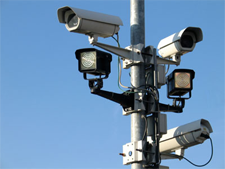
From Digital ‘Breadcrumbs’ To ‘Data Proxies’

To the list of data types roughly divided between “structured” and “unstructured” we can now add a third type referred to by theorists as “disembodied” data.
In a research paper published last month in the journal Body & Society, Gavin J.D. Smith of the Australian National University, notes that consumers carrying smartphones and wearing other connected devices are “walking sensor platforms.” The article, which also focuses on surveillance and privacy implications, asserts that humans have become either hosts or “the subjects of, an array of sensing devices that act to convert bodily movements, actions and dynamics into circulative data.”
Smith further posits that the interface between human “platforms” and sensor networks creates a “disembodied exhaust” or data trails defined as ” gaseous flows of personal information that establish a representational data-proxy.”
Or, as the spies say, “digital breadcrumbs” created when using mobile devices—even when they are turned off.
The resulting data proxies “paint a virtually intimate portrait of a person’s habits and situation, a networked impression of self,” Smith added. The researcher said his theory is intended to “conceptualize the body as a border site where data is simultaneously emitted and leveraged,” Smith asserted.
The “disembodied exhaust” given off when passing through a security scanner at the airport or physical movements detected by a Fitbit device give rise to a person’s “data-proxy,” the researcher argues. Connected apps then capture characteristics ranging from sleep patterns to consumer preferences. “This digital representation serves an as an abstracted figure created from the amalgamation of data traces” in a world filled with data networks.
Along with everyday data sharing, the phenomenon has created greater opportunities for data scientists in and out of governments to conduct what Smith calls “dataveillance.”
“Making online and offline behaviors visible as computer-generated visualizations help [organizations] to anticipate market trends, coordinate logistics and optimize services,” the researcher noted.
Moreover, the rise of what Smith derisively refers to as the “data-industrial complex” also has engendered more surveillance and, with it, growing concerns about privacy in an age when nearly everyone and everything is connected. Government agencies like the U.S. Federal Trade Commission have moved aggressively to crack down on data brokers, for example, accused of trafficking in personal, even health, data.
The theory of “disembodied exhaust” or data trails appears to raise the stakes in the ongoing battle over privacy and surveillance as a person’s every move can be tracked, recorded and analyzed. As Smith notes, a “mix of new technologies and organizational imperatives are refiguring the territory of the body in a culture that is increasingly obsessed with the production and consumption of data.”
The “data as exhaust” metaphor has been the target of ridicule in some quarters, but the implications of Smith’s research prompted data security and surveillance expert Bruce Schneier to post the research paper on his widely read security blog.
Recent items:
‘Data and Goliath’ A Portrait of Big Data Abuses
Concerns About Big Data Abuses Grow






























